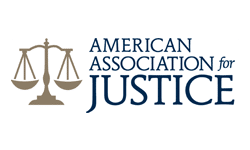
Since the rise of people taking prescribed opioids, addiction has increased in the U.S. In 2012, it was estimated that 2.1 million people in the country abuse opioids. West Virginia is one of the states the epidemic has hit the hardest.
The opioid epidemic continues to hurt Americans through addiction and overdoses. Drug manufacturing companies are facing scrutiny about withholding information about how opioids work and how easy it is for people to become addicted. As more people are questioning drug companies and thinking they could have provided more information that could have prevented addictions and overdoses, more legal options are opening up and becoming available. If your health has suffered due to a prescription opioid dependence you feel could have been prevented, our Charleston opioid litigation lawyers may be able to help.
What Are the Most Dangerous Types of Opioids?
One reason for the opioid epidemic is that people didn’t understand how highly addictive their prescription drugs were. There’s a sense of safety when drugs come from the doctor. When people think of addiction, they think of people buying drugs off the street, and it may have helped create a false sense of security, even if the person taking the drug realized they were taking them more frequently than before.
Many opioids have generic names and you may not know what the name correlates to. If your doctor prescribes you a drug and uses one of the generic names, it’s important to know what opioid they’re talking about.
Certain types of prescription opioids are more dangerous than others. This list of opioids starts with the most dangerous ends with the least. But all prescription opioids have the potential to cause dependence and should be used with extreme caution:
- Fentanyl. Duragesic.
- Hydromorphone. Dilaudid.
- Oxycodone. Oxycontin or Percoset.
- Morphine. MS Contin and Kadian.
- Hydrocodone. Vicodin and Hycodan.
- Codeine. This drug doesn’t have a generic name because when it’s mixed with another medication, it could be called “Tylenol with Codeine.”
Fentanyl comes in first because it’s easy to overdose on this drug. A lethal dose of fentanyl is only two milligrams.
How Do Opioids Affect You?
The DEA classifies some opioids as Schedule II drugs: Fentanyl, hydromorphone, oxycodone, and hydrocodone. With Schedule I as the category for drugs with the highest chance of abuse without any medical uses, Schedule II drugs can be used as medication, but still retain the high risk of abuse.
People get addicted to opioids because they produce a euphoric feeling and relieve pain. But as people take the drug, they can develop a tolerance that requires them to take more of the drug to feel those effects. They may also feel unpleasant withdrawal effects as the drug leaves their system, and the person feels the need to take more of the drug. As this continues, the person becomes addicted.
Opioids can produce the following side effects:
- Confusion
- Constipation
- Drowsiness
- Nausea
As more people know about opioids and their side effects, they may be more cautious if their doctor prescribes them. It may also help society understand the people who are addicted. They’re everyday people who needed an intense pain reliever, and unfortunately they became dependent on the drug. They deserve compassion, understanding, and opportunities to overcome their addiction.






